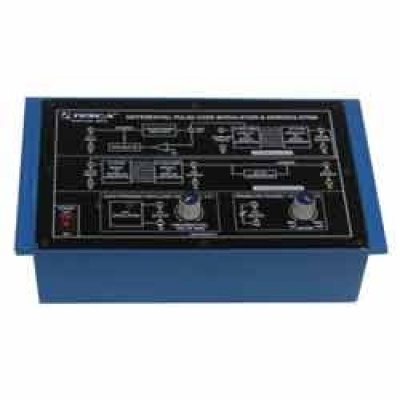- Civil Lab Mechanical Lab Engineering Lab Equipments
- sales@didacticlabequipments.com

CAT NO: DIDACTICECE-LAB-0058
Digital Modulation.
DIGITAL MODULATIONS
Experiment board for the study of digital modulation transmitters
and receivers: ASK (Amplitude Shift Keying), FSK (Frequency
Shift Keying), PSK (Phase Shift Keying), QPSK (Quadrature Phase
Shift Keying) and QAM (Quadrature Amplitude Modulation). It
contains all the pre-assembled electronic components needed
to construct the experiment circuits and divided into functional
blocks which can be interconnected and modifi ed by means of
supplied jumpers and connection cables.
TRAINING PROGRAM:
• ASK-FSK-PSK-QPSK-QAM signal generation
• Absolute and differential PSK and QPSK
• Data signal coding: NRZ, Manchester, Dibit, Tribit
• ASK-FSK-PSK-QPSK-QAM signal demodulation
• Asynchronous and synchronous demodulation
• Carrier recovery: PLL and with Costas Loop circuit
• Examination of the constellation diagrams of PSK,
QPSK and QAM signals
• Error rate measurement (BER)
• Creation of modems for data transfer
• Data transfer via RS232C serial port
• Effects of the transmission channel and noise
• Troubleshooting
TECHNICAL SPECIFICATION:
• Data rate: 300/600/1200/1800 bit/s
• Data format: synchronous and asynchronous
• Data interface: TTL and V24/RS232C
• Data patterns:
- Programmable 24-bit
- Pseudo-random 64-bit
- External data
• Data coders: Manchester; 1-bit differential; Dibit; Tribit;
2-bit differential
• Sine carriers: 1200Hz, 0/90°; 1800 Hz
• Analogue signals synchronous with digital signals,
for easier wave form examination
• Error rate meter with numerical digital display
• Interface for constellation diagram
• Channel simulator: adjustable attenuation
Noise generator: adjustable amplitude
• Rapid modifi cations to circuits using jumpers
• Fault simulation: Possibility to insert 10 faults
• Test and interconnection points, Ø 2 mm
• Rapid modifi cations to circuits using jumpers
• 37-pin connector to the fault insertion unit
• 8-wire connector to the power supply unit
• Printed circuit board with protective treatment and mimic
diagram
• Module equipped with ABS protection on its lower side
